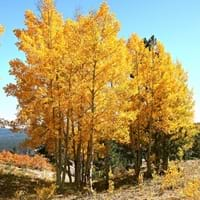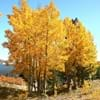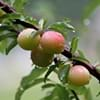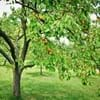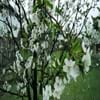Life Span
Perennial
Perennial
Type
Tree
Flowering Plants, Fruits, Trees
Origin
North America
Central Asia
Types
Not Available
Aceymac apple, Bailey Sweet apple, Dabinett apple, Nehou apple
Number of Varieties
Not Available
Habitat
Forest margins, gardens, Roadsides, Woodlands
Hillside
USDA Hardiness Zone
1-8
5-8
Sunset Zone
A1, A2, A3, 1a, 1b, 2a, 2b, 3a, 3b, 4, 5, 6, 7, 14, 15, 16, 17, 18, 19
A1, A2, A3, 8, 9, 10, 11, 12, 13, 14, 15, 16, 17, 18, 19, 20, 21, 22, 23, 24
Habit
Upright/Erect
Oval or Rounded
Flower Color
Not Available
White
Flower Color Modifier
Bicolor
Not Available
Fruit Color
Brown
Green, Red
Leaf Color in Spring
Blue Green, Dark Green
Dark Green
Leaf Color in Summer
Blue Green, Dark Green
Green
Leaf Color in Fall
Yellow, Blue Green
Brown, Green, Light Yellow
Leaf Color in Winter
Not Available
Not Available
Leaf Shape
Heart-shaped
Oblong
Plant Season
Spring, Summer, Fall
Spring
Sunlight
Full Sun
Full Sun, Partial shade
Type of Soil
Clay, Loam, Sand
Loamy
The pH of Soil
Acidic, Neutral
Neutral
Soil Drainage
Average
Well drained
Bloom Time
Spring
Fall, Summer
Where to Plant?
Ground
Ground
How to Plant?
From Rhizomes
Grafting, Seedlings, Transplanting
Plant Maintenance
Medium
Medium
Watering Requirements
Prefer drip-irrigation instead of Over-head watering, Water more in summer
Medium
In Summer
Lots of watering
Lots of watering
In Spring
Moderate
Moderate
In Winter
Average Water
Average Water
Soil pH
Acidic, Neutral
Neutral
Soil Type
Clay, Loam, Sand
Loamy
Soil Drainage Capacity
Average
Well drained
Sun Exposure
Full Sun
Full Sun, Partial shade
Pruning
Prune to control growth, Remove deadheads, Shape and thin as needed
Prune when plant is dormant, Remove dead or diseased plant parts
Fertilizers
20-20-20 amount, All-Purpose Liquid Fertilizer, Apply 10-10-10 amount
All-Purpose Liquid Fertilizer
Pests and Diseases
Insects
Aphids, Canker, Caterpillars, Powdery mildew, Root rot
Plant Tolerance
Drought
Drought
Flowers
Insignificant
Yes
Flower Petal Number
Not Available
Single
Foliage Texture
Medium
Medium
Foliage Sheen
Glossy
Matte
Attracts
Not Available
Birds
Allergy
Not Available
Mouth itching, Throat itching
Aesthetic Uses
Showy Purposes
Not Available
Beauty Benefits
Not Available
Not Available
Environmental Uses
Air purification
Air purification
Medicinal Uses
Not Available
Cancer, constipation, Diabetes, Diarrhea, Dysentry, Fever, Heart problems, Tooth ache
Part of Plant Used
Bark, Pulp
Fruits
Other Uses
Used in paper industry, Wood is used for making furniture, Wood is used in construction
Used As Food, Wood is used for making furniture
Used As Indoor Plant
No
No
Used As Outdoor Plant
Yes
Yes
Garden Design
Shade Trees
Fruit / Fruit Tree, Shade Trees, Showy Tree
Botanical Name
POPULUS tremuloides
Malus domestica
Common Name
Quaking Aspen
Apple Tree
In Hindi
Quaking Aspen
सेब का वृक्ष
In German
Zitterpappel
Apfelbaum
In French
tremble
Pommier
In Spanish
Temblor Aspen
Manzano
In Greek
τρεμώδεις Aspen
μηλιά
In Portuguese
Quaking Aspen
Macieira
In Polish
Quaking Aspen
jabłoń
In Latin
Tremens Quisque
Arbore
Phylum
Tracheophyta
Magnoliophyta
Class
Magnoliopsida
Magnoliopsida
Order
Malpighiales
Rosales
Family
Salicaceae
Rosaceae
Clade
Angiosperms, Eudicots, Rosids
Angiosperms, Eudicots, Rosids
Tribe
Saliceae
Not Available
Subfamily
Not Available
Not Available
Number of Species
Not Available
Season and Care of Quaking Aspen and Apple Tree
Season and care of Quaking Aspen and Apple Tree is important to know. While considering everything about Quaking Aspen and Apple Tree Care, growing season is an essential factor. Quaking Aspen season is Spring, Summer and Fall and Apple Tree season is Spring, Summer and Fall. The type of soil for Quaking Aspen is Clay, Loam, Sand and for Apple Tree is Loamy while the PH of soil for Quaking Aspen is Acidic, Neutral and for Apple Tree is Neutral.
Quaking Aspen and Apple Tree Physical Information
Quaking Aspen and Apple Tree physical information is very important for comparison. Quaking Aspen height is 1,220.00 cm and width 610.00 cm whereas Apple Tree height is 25.00 cm and width 20.00 cm. The color specification of Quaking Aspen and Apple Tree are as follows:
Quaking Aspen flower color: Not Available
Quaking Aspen leaf color: Blue Green and Dark Green
Apple Tree flower color: White
- Apple Tree leaf color: Dark Green
Care of Quaking Aspen and Apple Tree
Care of Quaking Aspen and Apple Tree include pruning, fertilizers, watering etc. Quaking Aspen pruning is done Prune to control growth, Remove deadheads and Shape and thin as needed and Apple Tree pruning is done Prune when plant is dormant and Remove dead or diseased plant parts. In summer Quaking Aspen needs Lots of watering and in winter, it needs Average Water. Whereas, in summer Apple Tree needs Lots of watering and in winter, it needs Average Water.
